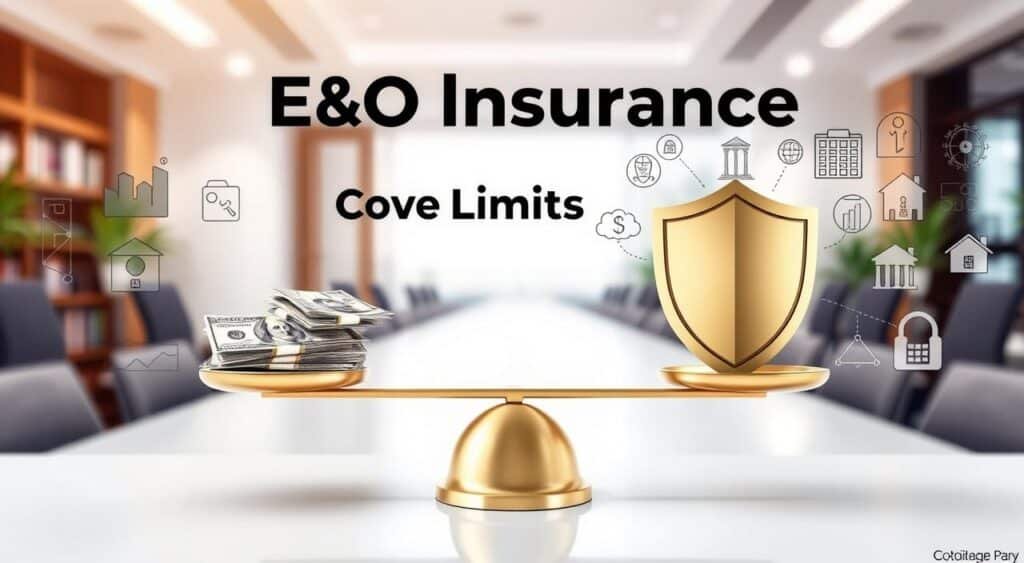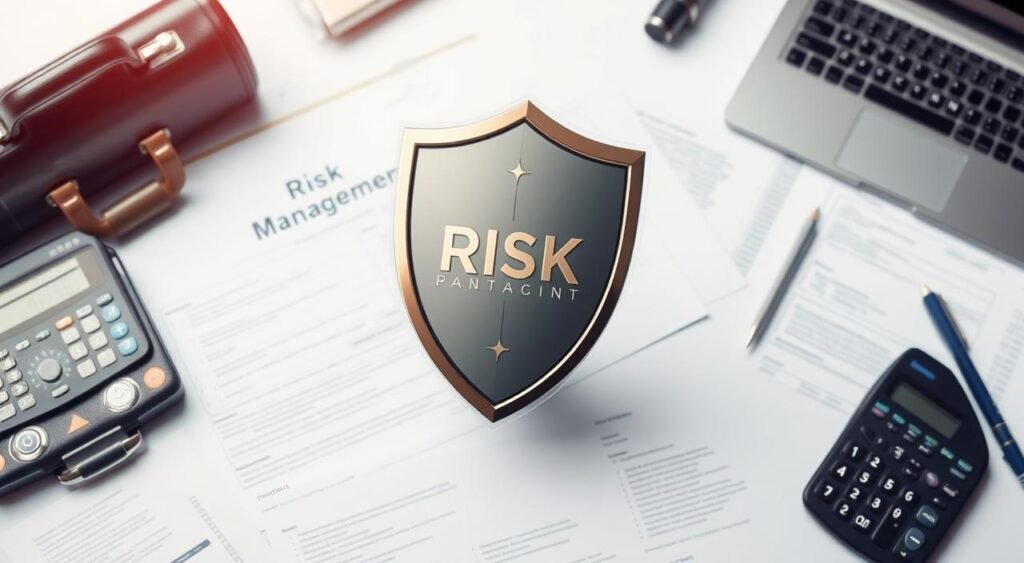In the fast-paced world of professional services, mistakes can lead to big problems. Errors and omissions (E&O) insurance acts as a safety net. It helps protect businesses and individuals who give expert advice or specialized services.
This insurance shields your company from claims of negligence, malpractice, or not delivering as promised. It keeps your reputation and financial health safe.
Key Takeaways
- Errors and omissions insurance covers claims against your business for mistakes or services you failed to provide.
- E&O insurance helps pay for your legal fees and any owed damages or settlements if a client sues you for negligence, malpractice, or failure to deliver promised results.
- Businesses that offer professional services or advice, such as insurance agents, doctors, lawyers, wedding planners, and financial advisors, likely need E&O insurance.
- E&O insurance doesn’t cover claims for property damage, bodily injury, workplace injuries, data breaches, intellectual property violations, or criminal acts like fraud.
- The average premium for a small business E&O insurance policy is around $735 per year.
What Is Errors And Omissions Insurance?
Errors and omissions insurance, also known as professional liability coverage, is key for businesses offering professional services. It shields your company from client claims for mistakes or not meeting expectations. It also covers legal defense, settlements, and damages from these claims.
Understanding the Necessity of E&O Coverage
General liability insurance doesn’t protect against professional service claims. Errors and omissions insurance fills this gap. It covers issues like professional negligence, inadequate service, and data breaches.
Types of Claims Covered by E&O Insurance
E&O insurance pays for damages, settlements, and legal costs. It’s vital for businesses offering professional services. It safeguards their reputation and finances against lawsuits or claims.
| Claim Type | Description |
|---|---|
| Professional Negligence | Failure to provide the expected level of service or expertise |
| Inadequate Work or Service | Delivering work that does not meet the client’s requirements |
| Misrepresentation | Providing inaccurate or misleading information to clients |
| Breach of Duty | Failure to fulfill the obligations outlined in a contract |
| Libel and Slander | Damage to a client’s reputation due to false statements |
| Data Breach Liability | Liability for the exposure of client data or information |
Getting errors and omissions insurance is wise for businesses. It protects their reputation and financial health from professional liability claims.
Who Needs Errors And Omissions Insurance?

Errors and omissions (E&O) insurance is key for businesses that offer professional services or advice. It’s vital for accountants, graphic designers, and marketing consultants. Any company at risk of being sued for mistakes should get E&O coverage.
Industries Susceptible to E&O Claims
Some industries face more E&O claims than others. These include:
- Accountants – They handle financial advice and services, making them at high risk.
- Graphic Designers – They might face lawsuits for copyright issues, missed deadlines, or poor work.
- Advertising Agencies – They could be sued for ads that don’t work or make false claims.
- Marketing Consultants – They give advice that might not work out well, leading to lawsuits.
In some cases, E&O insurance is a must before starting work. This is true for lawyers, contractors, and doctors. E&O coverage is crucial for protecting your business and covering claims that could harm your reputation and finances.
| Profession | Potential E&O Risks | Importance of E&O Coverage |
|---|---|---|
| Accountants | Errors in financial reporting, tax preparation, or auditing | Helps protect against claims of negligence or malpractice |
| Graphic Designers | Copyright infringement, missed deadlines, substandard work | Covers legal defense and damages if a client sues for design issues |
| Advertising Agencies | Ineffective ad campaigns, false claims in client advertising | Safeguards the agency against liability for advertising mistakes |
| Marketing Consultants | Faulty strategic advice leading to poor business outcomes | Protects the consultant from being held liable for flawed recommendations |
Every business that offers professional services or advice needs errors and omissions insurance. It’s a vital insurance cover. By getting the right insurance policy and insurance coverage, you can protect your business and cover claims that could harm your reputation and finances.
Exclusions and Limitations of E&O Policies

Understanding errors and omissions insurance, or professional liability insurance, is key. E&O policies don’t cover claims for bodily injury, property damage, or employment issues. They also exclude fraud, criminal acts, worker injuries, intellectual property infringement, data breaches, and theft of sensitive information.
It’s vital to read the fine print of any E&O insurance policy. Knowing the exclusions and limitations helps ensure your business insurance offers the right protection. This way, you can see if the policy coverage meets your insurance needs and the risks your company might face.
| Exclusion | Explanation |
|---|---|
| Bodily Injury/Property Damage | E&O policies typically don’t cover claims related to physical harm or property damage. |
| Employment Practices Liability | Claims such as wrongful termination, discrimination, or harassment are often excluded. |
| Fraud and Criminal Acts | Intentional or criminal behavior, including fraud, is generally not covered by E&O insurance. |
| Intellectual Property Infringement | Claims related to the infringement of patents, copyrights, or trademarks are often excluded. |
| Data Breaches and Cyber Incidents | E&O policies may not protect against data breaches, cyber attacks, or the theft of sensitive information. |
Knowing the limitations and exclusions of your E&O insurance policy helps you make smart choices. It ensures you have the right coverage to protect your business and handle the risks you face.
Determining the Right Coverage Limits

When picking an errors and omissions insurance (E&O) policy, it’s key to find the right coverage limits for your business. You need to understand two main limits: the per occurrence limit and the aggregate limit.
The per occurrence limit is the highest amount the policy will pay for one lawsuit or claim. This is the most important figure. It shows the maximum financial help you’ll get for any single issue. A higher per occurrence limit means stronger protection for your business.
The aggregate limit is the total maximum the policy will pay out in a year. It makes sure your business is safe, even if many claims happen in a year.
To pick the right limits, think about the biggest claim your business could face. Your per occurrence limit should be as high as the biggest loss you could have. Then, multiply this by how many transactions you do each year to find your aggregate limit.
Choosing the right per occurrence and aggregate limits is crucial. It makes sure your errors and omissions insurance policy can handle claims. This protects your business’s reputation.
Errors And Omissions Insurance: A Safety Net for Professionals

In the world of professional services, mistakes can lead to big problems. That’s why errors and omissions (E&O) insurance is so important. It acts as a safety net, covering legal claims from mistakes or not doing what was promised.
Without E&O insurance, businesses face huge costs for legal fees and damages. This can be very hard for small companies. E&O insurance helps keep your business safe and stable, letting you focus on your work.
Whether you work in tech, finance, or management, E&O insurance is key. It protects you from many claims, like not being honest or not meeting promises. This means your business is safe.
“Errors and omissions insurance is the backbone of a professional services firm’s risk management strategy. It’s the safety net that gives you the confidence to focus on your core business.”
Getting E&O insurance coverage means your business is safe from financial harm. You can serve your clients without worry.
Factors Affecting the Cost of E&O Insurance

The cost of errors and omissions (E&O) insurance can change a lot. Knowing what affects it helps you choose the right insurance coverage. This way, you get the most value for your money.
Industry, Business Size, and Claim History
The industry you’re in greatly affects E&O insurance costs. For example, tech and architecture fields often face higher risks. This means they pay more for insurance. The size of your business also plays a role in what insurance you need and how much it costs.
Your claim history is another big factor. If you’ve had claims before, you’ll likely pay more. But, if you haven’t, you might get better rates. This is because insurance companies look at your past to guess your future risks.
Many small businesses pay around $735 a year for E&O insurance. But, the exact cost depends on your coverage and business specifics. It’s not just about the price; it’s about finding the right coverage for your business.
“The cost of e&o insurance is an important consideration, but it should not be the sole factor in your decision-making process. Ensuring you have the right level of e&o coverage that protects your business is crucial.”
Understanding what affects your e&o insurance quote helps you choose wisely. Being ready to get an e&o insurance quote lets you find the best policy for your budget and needs.
Also Read: Can Insurance Sr22 Be Obtained For Non-owner Drivers?
Conclusion: Safeguarding Your Business with E&O Insurance
In today’s complex business world, errors and omissions (E&O) insurance is key. It protects companies that offer professional services or advice. This insurance helps shield businesses from financial losses due to client claims about negligence, mistakes, or unfulfilled promises.
E&O insurance policies can handle many types of claims. This includes claims about professional negligence or not meeting contractual duties. It’s especially useful for industries like consultants, financial advisors, and IT professionals. By understanding what E&O policies cover and what they don’t, businesses can get the right protection for their needs.
Finding the right coverage limits and knowing how much E&O insurance costs is crucial. Whether you need general liability insurance, employment practices liability insurance, or a specialized E&O policy, the right coverage is vital. It protects your company’s reputation and finances from unexpected professional errors or omissions.
FAQs
Q: What is errors and omissions insurance?
A: Errors and omissions insurance, also known as E&O insurance or professional liability insurance, is designed to protect business owners from claims arising out of mistakes, negligence, or omissions in the services they provide.
Q: How does errors and omissions insurance protect my business?
A: E&O insurance can help cover legal fees, settlements, and damages if a client claims that your services caused them financial loss due to an error or omission. This protection is crucial for maintaining your reputation and financial stability.
Q: How much does errors and omissions insurance cost?
A: The errors and omissions insurance cost varies based on factors such as the type of business, location, and coverage limits. On average, small businesses can expect to pay anywhere from $500 to $2,000 annually for an E&O policy.
Q: How can I get an errors and omissions insurance quote?
A: To get an errors and omissions insurance quote, contact an insurance agent or provider. They will ask about your business operations, the type of business you run, and coverage needs to provide you with an accurate quote.
Q: Do I really need to carry errors and omissions insurance as a small business owner?
A: Yes, carrying errors and omissions insurance is highly recommended for small business owners, especially those in professional services, such as real estate agents or consultants. It protects against potential claims that could significantly impact your business.
Q: What types of claims does errors and omissions insurance cover?
A: E&O insurance covers claims related to negligence, misrepresentation, inaccurate advice, or failure to deliver services as promised. It helps ensure that your business is protected from financial repercussions due to these claims.
Q: How can I determine the right amount of errors and omissions coverage for my business?
A: The right amount of errors and omissions coverage depends on your industry, the potential risks involved, and your business’s financial situation. Consulting with an insurance advisor can help you assess the appropriate coverage for your needs.
Q: What is the difference between errors and omissions insurance and general liability insurance?
A: Errors and omissions insurance specifically covers claims related to professional services and mistakes made in those services, while general liability insurance covers claims related to bodily injury, property damage, and personal injury that may occur during business operations.
Q: Can I buy an E&O policy online?
A: Yes, many insurance providers offer the option to buy an E&O policy online. However, it’s advisable to consult with an insurance agent to ensure you fully understand the coverage and select the right policy for your needs.
Q: What should I do if a client files a claim against me?
A: If a client files a claim against you, contact your insurance provider immediately. They will guide you through the claims process and help you understand the coverage provided by your errors and omissions insurance policy.
Source Links
- https://www.robertson.insure/commercial/liability/errors-omissions/
- https://www.investopedia.com/terms/e/errors-omissions-insurance.asp
- https://www.kilgourbell.com/blog/guarding-your-business-the-power-of-errors-omissions-insurance






